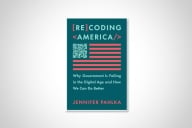You have /5 articles left.
Sign up for a free account or log in.
I’ve been in D.C. for the past few days at a Project Directors’ meeting for several Federal grant programs. The conference was heavy on plenary sessions, which I’ll admit is not my preferred style. Much of the oratory has been of the “hooray for us” variety, which keeps the peace but doesn’t really help us do our jobs better.
That said, though, I found a useful breakout session about improving students’ financial literacy. The session was standing-room-only, which I actually took as a good sign; at least there seems to be widespread recognition that this is a real issue.
Given that the folks doing the presentations mostly work at colleges, they tended to present ‘financial literacy’ in the context of student loan default rates. It’s a start.
The single strongest predictor of the likelihood of default on student loans is whether the student dropped out or graduated; dropouts default at more than four times the rate that graduates do. Which makes sense, if you think about it. The dropouts have lower incomes, on average, and may well feel that they didn’t get what they paid for. To the extent that we can improve graduation rates, there may be a positive effect on loan repayment rates.
A host of panelists presented various websites, workshops, and on-campus coaching sessions they offer students around financial literacy. Strikingly, though, nobody had any longitudinal data on which forms of outreach actually work, if any.
The lack of an evidence base for the effectiveness of any given intervention is a major gap, but one that could be closed with some effort. I’d guess upfront that student loan defaults are best read as a subset of student (and recent graduate) economic struggles generally. Students who are doing well economically tend to repay. This may be a case in which the best way to effect a narrow goal -- reducing default rates -- is to attack a much larger goal, which is something like “how to manage money as an adult in the real world.”
For example, some students don’t know the difference between subsidized and unsubsidized loans. Some may not understand the logic behind paying down the highest-interest loan first. They may not understand the concept of a “credit rating,” and the effect it can have on, say, apartment hunting. (At 22, I had no clue about credit ratings.) I’ve been told by an economics professor on campus that her students recoil in horror when she goes through the details of how credit cards make their money; they simply didn’t know. (I can only imagine how they’d react to learning the details about payday lenders.) Young adults who’ve never dealt with insurance may not have any sense of what a “deductible” is -- the word always struck me as misleading -- or why it matters.
If anything, I’m wondering if financial literacy might make a good substantive focus for a freshman seminar. Yes, it could cover student loans, but it should go well beyond that. As a subject, the relevance should be obvious. Better, it would allow students to exercise the various general education outcomes that most colleges profess: communication skills, critical thinking, and quantitative reasoning all leap to mind. The actual math involved may be relatively simple, but the way of looking at the world is both powerful and complex. I remember reading, somewhere around the age of 30, that paying off a student loan at 8 percent interest -- yes, kids, that was what we were charged back then -- was the equivalent of an investment with a guaranteed after-tax return of 8 percent. If you could find an investment like that, you’d take it. So paying down the student loans faster was a good financial move. The math is pretty basic, but simply flipping the concept around made a concrete difference in my financial behavior.
Hell, I remember being flummoxed at my first paycheck when I saw the difference between “gross” pay and actual take-home pay. That was a rude shock. Giving students a heads-up on that, and the real costs of commuting, could help them make decisions in their own benefit later.
Admittedly, a freshman seminar with this kind of focus might be a challenge when the ages of entering students are as disparate as they are at community colleges. But it could also give the older students a chance to share some real-world experience, and to gain some respect for what they’ve been through. James Baldwin famously noted that poverty is expensive; people who have actually lived broke know exactly what that means. If the students learn enough so that they later steer clear of payday lenders, then they’re empowered to lead lives in which their choices are their own.
Ideally, we could use our outcomes assessment protocols to look not only at the gen ed outcomes, but eventually, at students’ economic outcomes. Is financial literacy simply an interesting academic exercise, or does it actually improve students’ lives? And do some ways of teaching it work better than others?
As educators, we don’t control the job market. And I’ll concede upfront that we need to do a better job on tuition. But even granting both of those, students who leave with a sense of real-world economics strike me as empowered in a way that students who don’t, aren’t.
Wise and worldly readers, what do you think? Is financial literacy a potentially useful subject for a freshman seminar? Or is this all just dancing around the recession?







